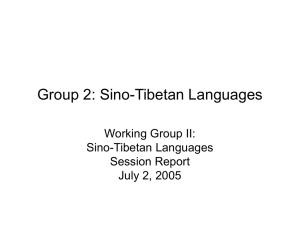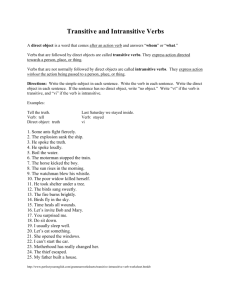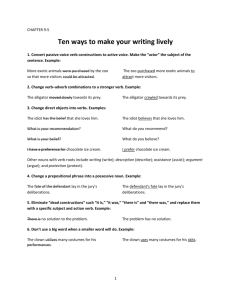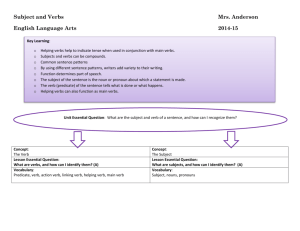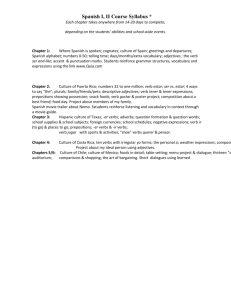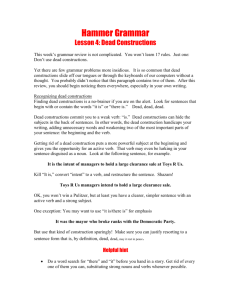On the formation and development of Reaction Object Constructions
advertisement
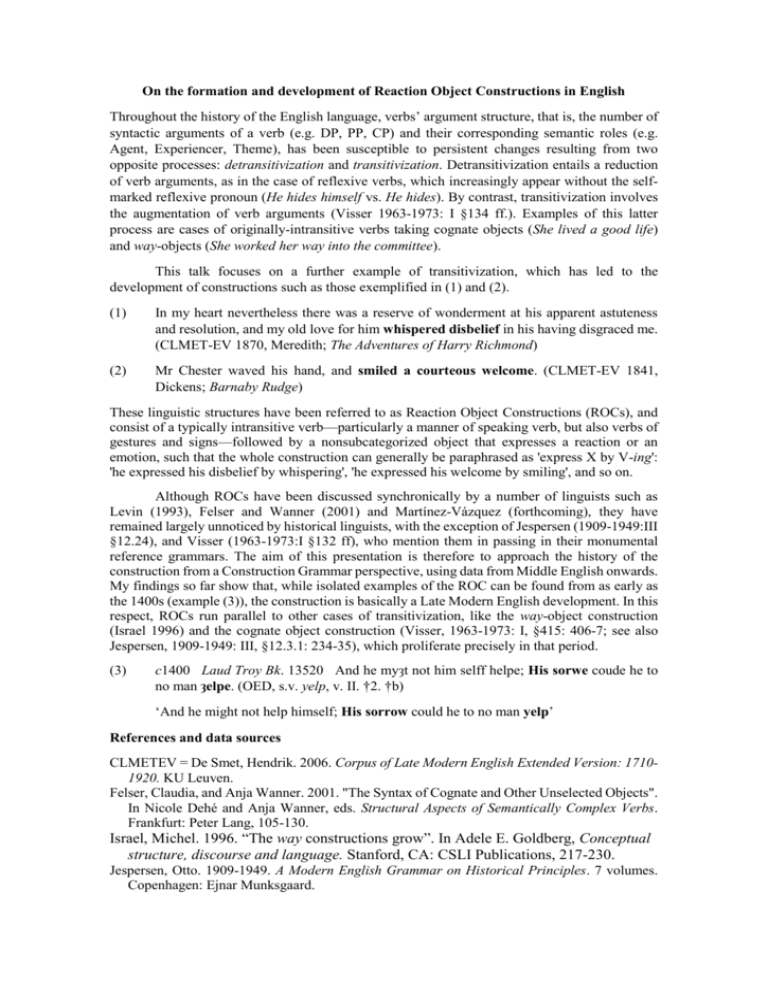
On the formation and development of Reaction Object Constructions in English Throughout the history of the English language, verbs’ argument structure, that is, the number of syntactic arguments of a verb (e.g. DP, PP, CP) and their corresponding semantic roles (e.g. Agent, Experiencer, Theme), has been susceptible to persistent changes resulting from two opposite processes: detransitivization and transitivization. Detransitivization entails a reduction of verb arguments, as in the case of reflexive verbs, which increasingly appear without the selfmarked reflexive pronoun (He hides himself vs. He hides). By contrast, transitivization involves the augmentation of verb arguments (Visser 1963-1973: I §134 ff.). Examples of this latter process are cases of originally-intransitive verbs taking cognate objects (She lived a good life) and way-objects (She worked her way into the committee). This talk focuses on a further example of transitivization, which has led to the development of constructions such as those exemplified in (1) and (2). (1) In my heart nevertheless there was a reserve of wonderment at his apparent astuteness and resolution, and my old love for him whispered disbelief in his having disgraced me. (CLMET-EV 1870, Meredith; The Adventures of Harry Richmond) (2) Mr Chester waved his hand, and smiled a courteous welcome. (CLMET-EV 1841, Dickens; Barnaby Rudge) These linguistic structures have been referred to as Reaction Object Constructions (ROCs), and consist of a typically intransitive verb—particularly a manner of speaking verb, but also verbs of gestures and signs—followed by a nonsubcategorized object that expresses a reaction or an emotion, such that the whole construction can generally be paraphrased as 'express X by V-ing': 'he expressed his disbelief by whispering', 'he expressed his welcome by smiling', and so on. Although ROCs have been discussed synchronically by a number of linguists such as Levin (1993), Felser and Wanner (2001) and Martínez-Vázquez (forthcoming), they have remained largely unnoticed by historical linguists, with the exception of Jespersen (1909-1949:III §12.24), and Visser (1963-1973:I §132 ff), who mention them in passing in their monumental reference grammars. The aim of this presentation is therefore to approach the history of the construction from a Construction Grammar perspective, using data from Middle English onwards. My findings so far show that, while isolated examples of the ROC can be found from as early as the 1400s (example (3)), the construction is basically a Late Modern English development. In this respect, ROCs run parallel to other cases of transitivization, like the way-object construction (Israel 1996) and the cognate object construction (Visser, 1963-1973: I, §415: 406-7; see also Jespersen, 1909-1949: III, §12.3.1: 234-35), which proliferate precisely in that period. (3) c1400 Laud Troy Bk. 13520 And he myȝt not him selff helpe; His sorwe coude he to no man ȝelpe. (OED, s.v. yelp, v. II. †2. †b) ‘And he might not help himself; His sorrow could he to no man yelp’ References and data sources CLMETEV = De Smet, Hendrik. 2006. Corpus of Late Modern English Extended Version: 17101920. KU Leuven. Felser, Claudia, and Anja Wanner. 2001. "The Syntax of Cognate and Other Unselected Objects". In Nicole Dehé and Anja Wanner, eds. Structural Aspects of Semantically Complex Verbs. Frankfurt: Peter Lang, 105-130. Israel, Michel. 1996. “The way constructions grow”. In Adele E. Goldberg, Conceptual structure, discourse and language. Stanford, CA: CSLI Publications, 217-230. Jespersen, Otto. 1909-1949. A Modern English Grammar on Historical Principles. 7 volumes. Copenhagen: Ejnar Munksgaard. Kogusuri, Tetsuya. 2009. "The Syntax and Semantics of Reaction Object Constructions in English". Tsukuba English Studies 28: 33-53. Levin, Beth. 1993. English Verb Classes and Alternations. A Preliminary Investigation. Chicago: The University of Chicago Press. Martínez-Vázquez, Montserrat. Forthcoming. "Nominalized Expressive Acts in English". Verbum XXXIV. Visser, Frederikus Theodorus. 1963-1973. An Historical Syntax of the English Language. Vol. I: Syntactical units with one verb. Leiden: E. J. Brill.

